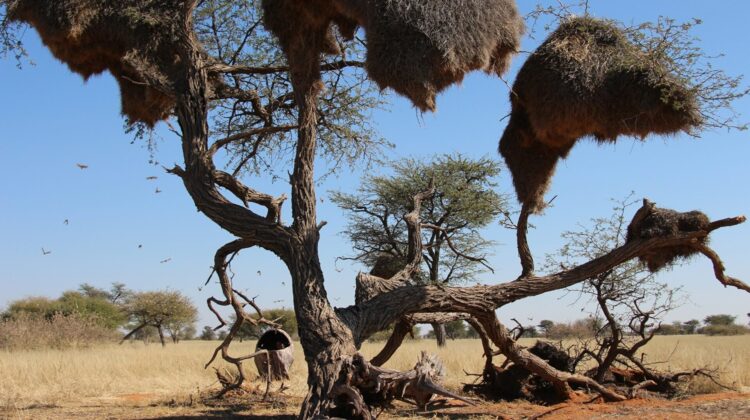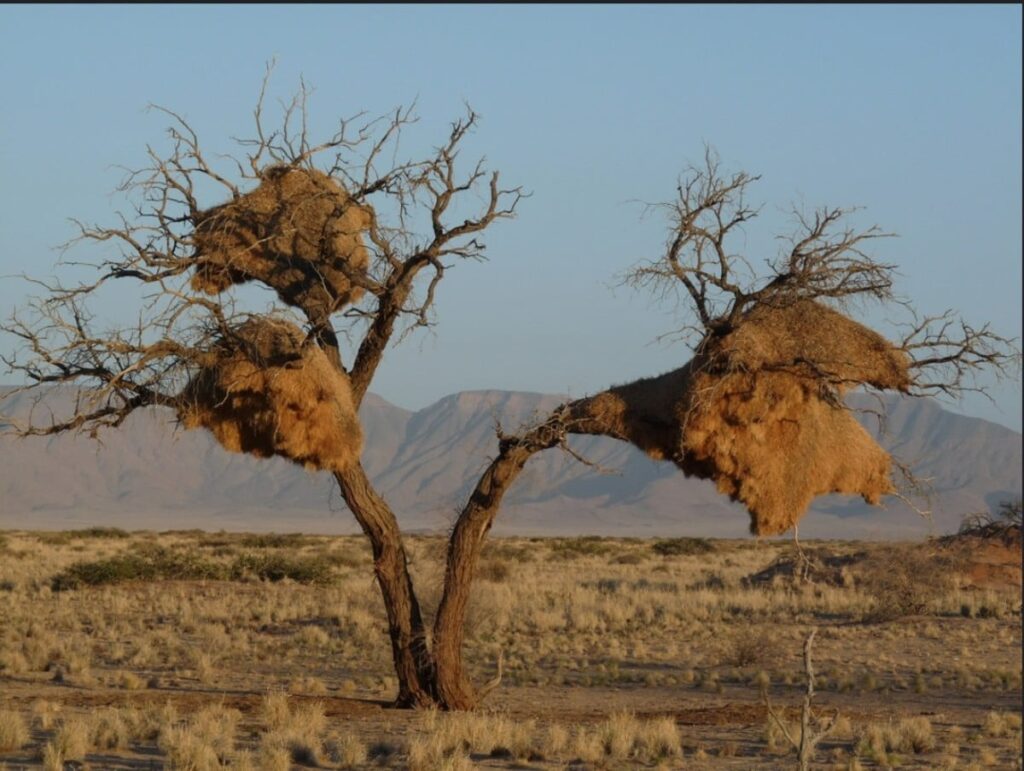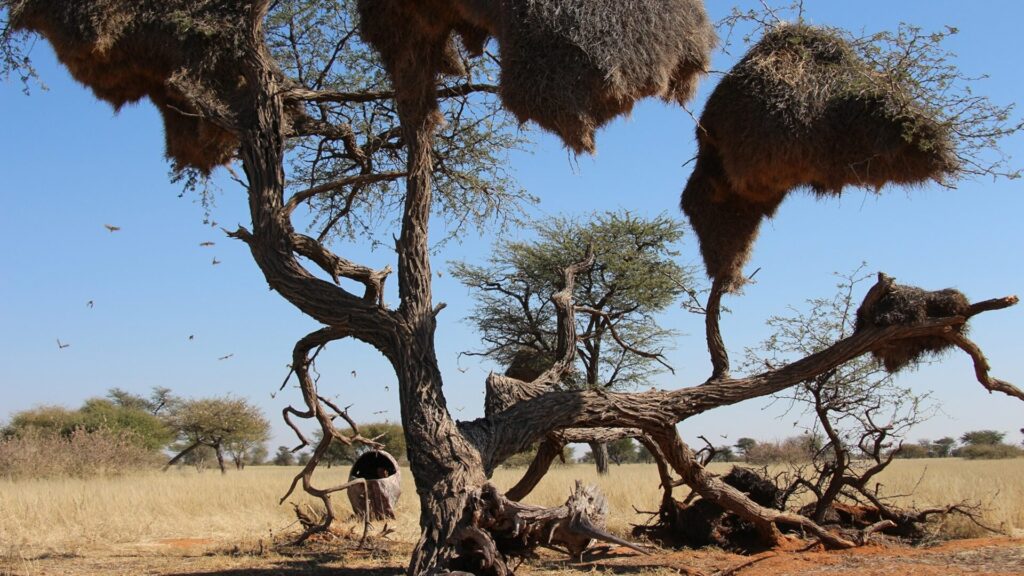
In the sweeping savannas of southern Africa, particularly in the arid landscapes of Namibia, an avian marvel takes flight, and its architectural prowess leaves ornithologists and nature enthusiasts alike in sheer wonder. These remarkable birds, known as weavers, are not just skilled nest builders; they are the architects of avian abodes larger than any other bird species, often weighing tons and standing the test of time for decades.

Among the various species of weavers that grace the African savannas, one stands out for its exceptional nest-building skills—the sociable weaver (Philetairus socius). These small, gregarious birds, measuring only about 14 centimeters in length, form tight-knit colonies that can consist of several hundred individuals.
What truly sets the sociable weaver apart is its extraordinary nesting behavior. These avian architects collaborate to construct colossal communal nests, known as “weaver nests” or “weaver bird nests,” that are unrivaled in the avian world. These nests are not just homes; they are intricate, multistory structures that resemble something between a bird condominium and a natural fortress.

The construction of these nests is a laborious and collective effort, reflecting the harmonious social structure of these birds. The nests are typically built in the branches of thorny acacia trees or on telephone poles and are designed to withstand the harsh African elements, including scorching sun and torrential rains. The outer layers are built with sticks and twigs, forming a protective shield against predators, while the inner chambers provide a cozy and safe haven for the weavers.
Over the years, as the colony grows, so does the nest. These communal dwellings can reach staggering sizes, with some nests spanning several meters in length and weighing as much as several tons. The intricate design of these nests helps regulate temperature and humidity, ensuring a suitable environment for raising their young and sheltering the entire colony.

Remarkably, these nests have a lifespan that can stretch over several decades, with new generations of weavers continuously adding to and refurbishing the structure. The passage of time leaves an indelible mark on these nests, with layers upon layers of history woven into their intricate fabric.
The sociable weaver’s nests serve not only as a testament to their remarkable engineering skills but also as a symbol of their tight-knit communities. These birds exemplify the beauty of cooperation in the natural world, where collective effort results in architectural marvels that defy expectations.

As the weavers continue to weave the threads of their unique existence into the fabric of the African savannas, they remind us of the boundless wonders of the animal kingdom and the incredible feats that can be achieved when beings work together in harmony with their environment.

Leave a Reply